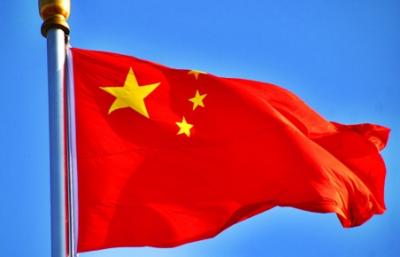

China posts growth in 2020 but economic challenges remain
<p>
Even as China posted a 2.3 per cent growth in 2020&mdash;one of the few countries to have managed to do so amid the Coronavirus pandemic&mdash;not all&rsquo;s well with the economy. Several economic challenges including receding consumption level, slowing of foreign direct investment (FDI) and rising debt especially for local governments are turning out to be major hurdles for the dragon.</p>
<p>
According to Xinhua, the state-run news platform, China&#39;s retail sales of consumer goods fell 3.9 per cent year on year in 2020, though the country&rsquo;s fourth quarter GDP growth stood at a strong 6.5 per cent.</p>
<p>
This also reflected in falling prices of consumer goods. In January, China consumer price index (CPI) slipped into a deflationary territory at -0.3 per cent compared to a rare of 0.2 per cent in December, according to CEIC.com, a data collation portal. CPI refers to the price changes in the basket of goods and services essentially purchased by households. China&rsquo;s deflation has been primarily driven by a drop in food prices.</p>
<p>
&ldquo;China&rsquo;s growth has been aided by public sector money, which means spending on infrastructure but private spending is not happening. People are saving and excessive saving is not a good thing.&nbsp;&nbsp; Deflation is a bad situation and one of the reasons is uncertainty,&rdquo; Shakti Sinha, former bureaucrat and director of Atal Bihari Vajpayee Institute of Policy Research and International Studies, MS University told IndiaNarrative.com.</p>
<p>
&ldquo;There is a demand slump in China and this could be due to unemployment. The impact of Covid is almost as severe in China as in other countries through the macro data is somehow not clearly showing that. But there has been rise in unemployment, the small and medium enterprises have been hit and many have had to shut down. There is uncertainty,&rdquo; DK Srivastava, EY&rsquo;s chief policy advisor said.</p>
<p>
Reports suggest that the urban areas have been impacted more than the rural markets. While consumption alone is not ideal to drive growth, it forms an integral part of the overall growth engine.</p>
<p>
Spanish economist Daniel Lacalle in his blog pointed out that China has a planned GDP. &ldquo;The GDP of China is dictated by production, not demand. It is not an observed GDP, but rather planned by the government together with the provinces,&rdquo; he wrote.</p>
<p>
<strong>FDI flow</strong></p>
<p>
Not just consumption, FDI inflow is also a cause for concern.</p>
<p>
While in December the year-on-year jump in FDI inflow was 6.2 per cent, in January it slowed to 4.6 per cent with a gain of just $1.2 billion. Though in 2020, China received the largest FDI kitty globally, &ldquo;Inflows from the US and Europe have dropped,&rdquo; according to UNCTAD&rsquo;s World Investment Report.&nbsp;&nbsp; However, investments from other ASEAN countries have increased.</p>
<p>
Interestingly, a report by interest.co.nz, a New Zealand based resource for interest-rate comparatives noted that &ldquo;most of the January gain came from Hong Kong, Taiwan and the EU.&rdquo; &ldquo;It is unclear why they pump their data with Hong Kong sourced investment, given it is an integrated PRC city these days,&rdquo; it said.&ldquo;As global players start to respond to longer term scenario and de-risk their supply chain, the FDI flow into China may start thinning,&rdquo; Srivastava said.&nbsp;</p>
<p>
Industry sources said that several companies that have manufacturing facilities in China are looking for options to set up factories outside as a mechanism to re-risk. Sinha added that the level of uncertainty remains which also is impacting the flow of FDI.</p>
<p>
&ldquo;Though China&rsquo;s overall FDI kitty is much higher than India, uncertainty — not only due to Covid but also with the changing geopolitical order — is playing a big role,&rdquo; Sinha added.</p>
<p>
<strong>Rising debt</strong></p>
<p>
In addition, China&rsquo;s debt level is steadily rising. A report published last month by South China Morning Post noted that the Chinese state owned firms registered a default of $11.1 billion — 51 per cent of all defaults last year. The Hong Kong based newspaper said that this was &ldquo;the largest default total for state firms since China first allowed onshore bond defaults in 2014, according to data published by the government linked think tank National Institution for Finance &amp; Development (NIFD).</p>
<p>
&nbsp;</p>
<p>
&nbsp;</p>
US President Donald Trump on Saturday (US local time) called the continuation of the trial…
Protestors in Serbia took to the streets of Belgrade and demanded an early election, as…
The Ministry of External Affairs (MEA) on Sunday strongly rejected the Pakistani Army's claims, where…
Indian Army strengthens ties with Russian Land Forces at the 4th Indo-Russian Inter-Governmental Commission (IRIGC)…
The Indo-French Joint Military Exercise SHAKTI-VIII continues to strengthen operational interoperability and mutual cooperation between…
Prime Minister Narendra Modi attended the centenary celebrations of the revered Jain spiritual leader Acharya…